All about saj pans

A delicious table is perhaps the only place where people do not get bored from the very first minute. It is this thought that arises at the mention of saj - a dish made from fresh, baked, stewed young lamb with vegetables.
Meanwhile, saj is not only a dish, but also a dish in which it is cooked and languished appetizingly. In the East, they say that by inventing a new dish, the author does more for the happiness of people than by discovering a new star. Create - universal Azerbaijani saj is at your service.
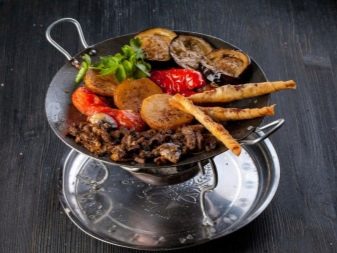
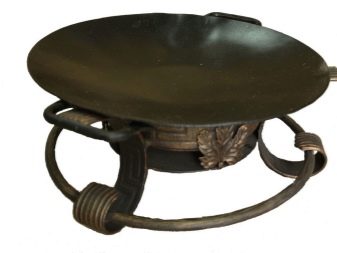
Peculiarities
The wise antiquity of Central Asia and other regions left us not only a legacy of a lot of recipes for preparing tasty and healthy food, but also special dishes, in which the original product literally turns into a dish that arouses gourmet lust. We are talking about Azerbaijani saj and its counterparts - Georgian tapa, Bulgarian sacha, Vietnamese wok and Moroccan tajin. These are all ancient kitchen utensils traditionally used to cook meat dishes over an open fire.
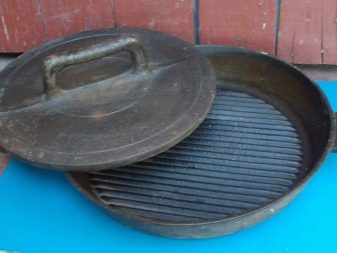

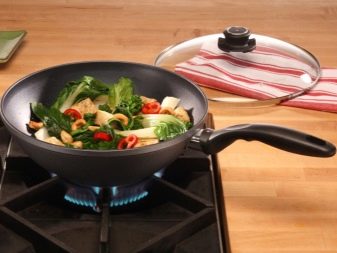
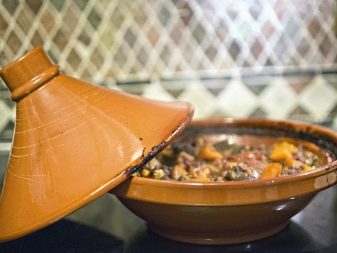
Saj is a special cast iron pan with a sloping spherical bottom and heated on coals. This ancient food processing technology has not only survived to this day, but also occupies a worthy place all over the world. The central part of the saja is usually used for frying meat, while the peripheral part is used for frying vegetables, which probably explains its spherical surface.
The dish and the dishes in which it is cooked got its name from the Sajids - an ancient dynasty of Arab rulers who lived in the southern part of Azerbaijan. In those days, food was cooked over an open fire.
Sharp-witted sajids used both sides of the container for cooking dishes - for barbecue or just frying meat, fish and vegetables, the concave side of the pan, and for lavash and flatbreads - the convex side. One dish - two dishes, a great item for long trips. Such dishes were made from clay or cast iron, a little later - from steel and other materials with a non-stick coating.
Usually saj is equipped with two handles made of different materials, but can be done without them. These dishes, depending on their size, allow you to cook quickly and a lot of food, without taking up a lot of space on trips.
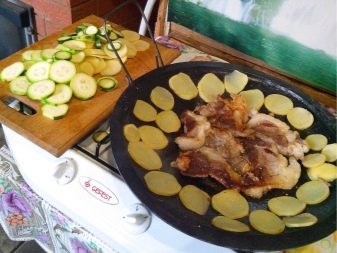
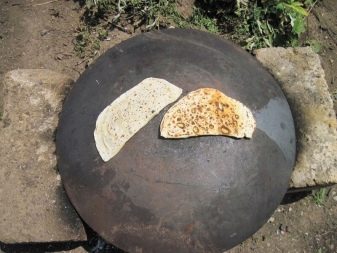
Speaking about the merits of saj, we note the following:
- keeps warm for a long time;
- versatility - used both at home and outdoors;
- withstands high temperatures, retaining its texture and reliability;
- long service life;
- after use does not require special care, it is enough to rinse the dishes with warm water.
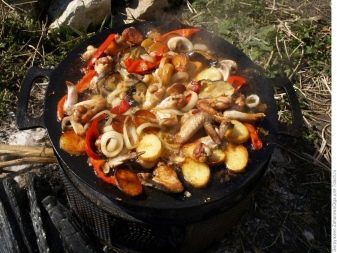
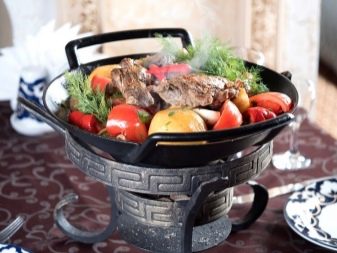
Views
Nowadays, three types of Azerbaijani saj are popular and produced.
The hiking option involves cooking over a fire. Saj's electric and gas options are designed for home cooking.
Saji are also divided according to the material of their manufacture, shapes and sizes..
- Classic version Azerbaijani sajah is cooked according to old recipes on charcoal using dishes of considerable size for a large group of people. Only cast iron utensils are used.
- Gas sage used for cooking at home. The models are convenient because they are heated by means of a gas stove. This frying pan is also suitable for summer cottages. The diameter of the product allows you to prepare meals for a significant number of guests. The materials used in the production are different - cast iron, stainless steel, alloys.
- Electric saji - a compact hybrid of a frying pan and a stove. Electrosadzhi is convenient to use not only at home, but also in summer cottages or outdoors (powered by a battery). Structurally, they are designed for a small number of people and are made of stainless steel, aluminum or ceramics.
Both ceramic and aluminum saji are produced. However, they are largely inferior to cast iron and steel products.

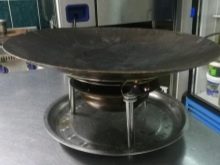
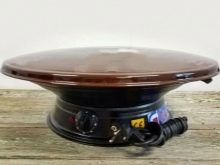
Advantages and disadvantages
The widespread use of cast iron saji is explained by traditions and a number of advantages of this metal:
- with a careful attitude to the cast-iron saj, it can be used for a long time, and its appearance will not get worse;
- high heat resistance of cast iron products guarantees their integrity and safety, despite constant use;
- the duration of the heat preservation of cast-iron dishes contributes to the fact that the dish cooked in it does not cool down for a long time;
- the thermal conductivity of cast iron ensures uniform heating of the dishes in all directions;
- the presence of a non-stick effect.
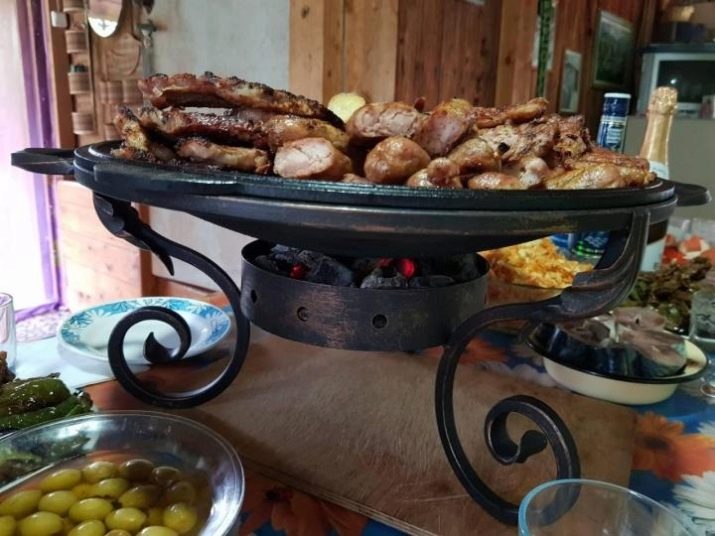
Of the disadvantages of cast iron saj, we note:
- the heavy weight of the product is not very convenient when using dishes;
- in conditions of humidity, cast iron becomes rusty, it is important to wipe the dishes after use;
- rust can also appear with prolonged storage in a pan of food;
- brittle cast iron may crack with strong impacts.
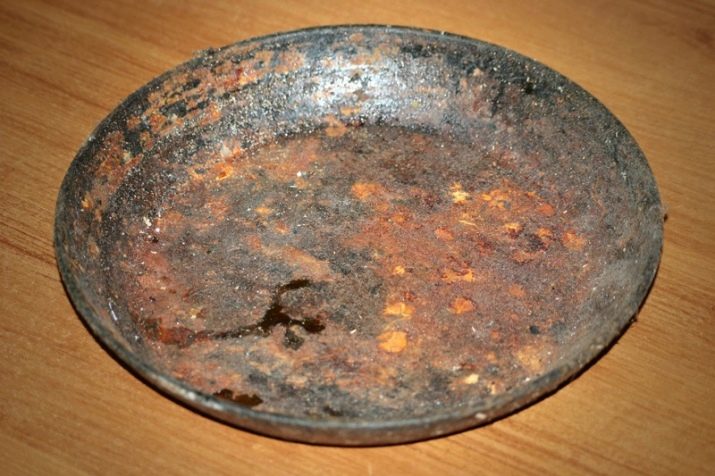
Stainless steel saj pan models also have their pros and cons:
- significantly less weight than cast iron products;
- when heated, steel does not emit harmful vapors, does not impart foreign tastes and odors to food;
- physical damage and burning of food do not affect the properties of stainless steel;
- high anti-corrosion properties;
- stainless steel dishes have a beautiful presentation, looks aesthetically pleasing in the kitchen.
When an empty steel pan is heated, blue-green stains appear on the bottom of the pan, which, however, are quickly eliminated. If burnt oil gets on the outside of the dish, carbon deposits are not easy to remove.
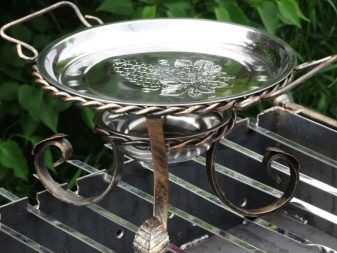

Dimensions (edit)
The sizes of saj pans are different, and they are usually chosen by diameter, guided by the volume of food required for cooking.
Manufacturers offer saji:
- small, less than 35.5 cm in diameter;
- average diameter - 35.5-40 cm;
- large, with a diameter of more than 40 cm.
Small items are designed for two or three people. More often, for obvious reasons, they acquire large saji. For example, a multifunctional cast-iron saj pan with a diameter of 45 cm (made in China, Forester brand) allows you to cook several types of products at once, as well as dishes for a significant company.
A cast-iron cauldron (of various sizes) with a lid made in the shape of a saja is a universal cookware. For lovers of aesthetics or just beautiful tableware, there are forged options for saj, complemented by various decorative elements.
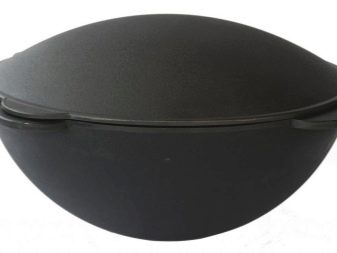

Care
Correct preparation of the Azerbaijani frying pan for the first use and then systematic, competent care of the dishes are a guarantee of a long service life of the product.
The preparation for the first use of your purchase will vary depending on what material it is made from. So, in cast iron products there is no non-stick coating, for this reason, procedures are necessary to give a saju from cast iron non-stick qualities.
First pan thoroughly washed with hot water using detergent... After that, they are dried and heated over a fire until the metal turns gray. Then, in a heated dish pour in table salt, which is kept for 10 minutes, until a slight, barely audible crackle appears. Next, the pan is washed with warm water, wiped dry and heated, lubricated with vegetable oil.
The more often the cast iron saj is used, the better.
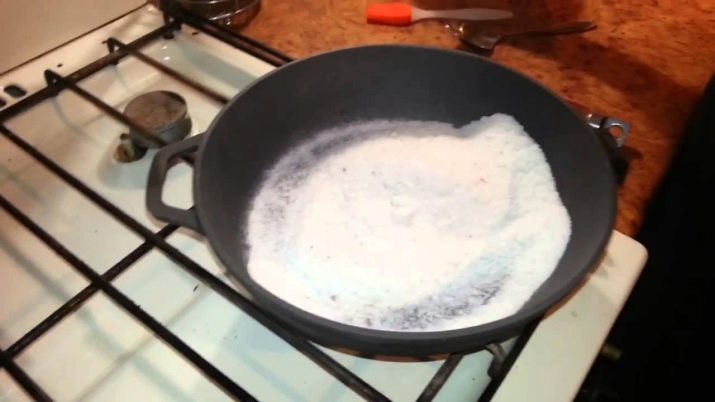
There are traditional, time-tested rules for caring for saj:
- it is not recommended to leave cooked food in a cast-iron dish for a long time - it starts to rust;
- after rinsing the pan, it should be wiped dry, or better - dried over a fire;
- periodically it is necessary to wipe the saj with vegetable oil or fat;
- store the product in dry places.
Sometimes, over time, rust still appears on the saja, but this does not mean at all that the dishes have become unusable. To remove dirt, about 1 kg of salt is poured into the container and heated over a fire for about an hour, stirring the heated salt. For the cooled product, further preparation procedures are performed as for its first use.
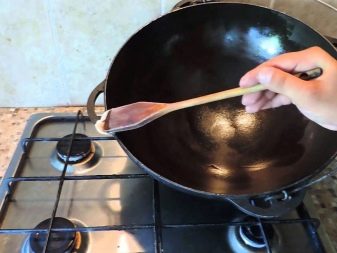
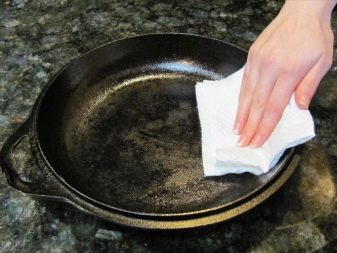
Steel, nickel and chrome saji do not rust, and therefore their preparation for use is easier than that of cast iron cookware. The pan is thoroughly washed, dried, and then ignited over a fire with the addition of a small amount of oil and a handful of salt. Calcined for about 20 minutes, until the first haze appears. Then the saj is washed, wiped off and dried.
The process of caring for stainless steel products consists of in their washing with a soft brush with the addition of detergents. If the dishes are heavily soiled, to clean them do not use substances with abrasive components. The simpler and more correct way is to boil the saj in water with detergents, and then wash it in the usual way. Store stainless steel dishes in dry places and preferably separately so as not to accidentally damage it.
You should not clean the stainless steel saj with substances containing abrasive inclusions - the dishes fade, scratches remain, and the products lose their presentation.
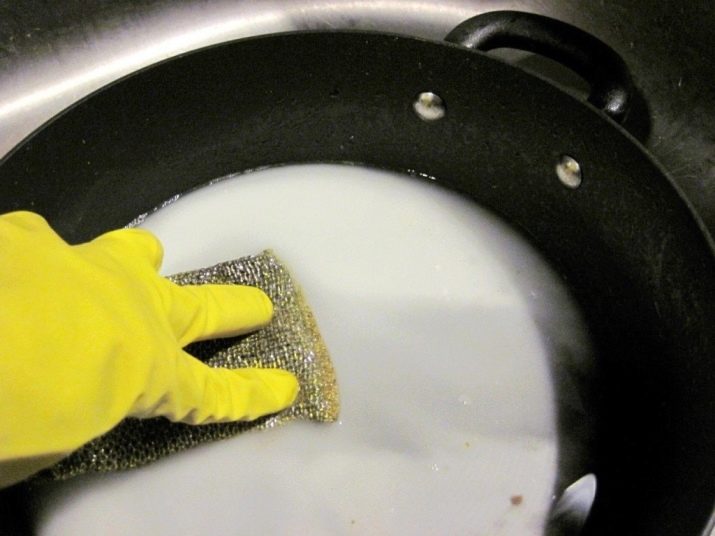
How to choose?
The choice of saj depends on the number of people who want to taste a delicious dish, the place of use of the dishes and the preferences of the buyer.
- Steel saji are more practical, lightweight, but you can't cook a classic dish with them. From this point of view, buying a cast iron saj will be the right decision.
- Teflon coating although considered non-stick, a small amount of oil should be used in cooking. In addition, these coatings are short-lived and wear out relatively quickly.
- Electric saj is made of special alloy. Small diameter cookware, not designed for a large team. Its main advantage is its compactness.
- Gas Saj is equipped with a burner, and therefore it can be used both at home and in the open air (taking a gas cylinder with you).
When purchasing saj, you should pay attention to the thickness of its bottom and walls, which should not be less than 6 mm. Smooth and smooth surface of the product is an indicator of its quality. Longer saja handles are more comfortable and safer.
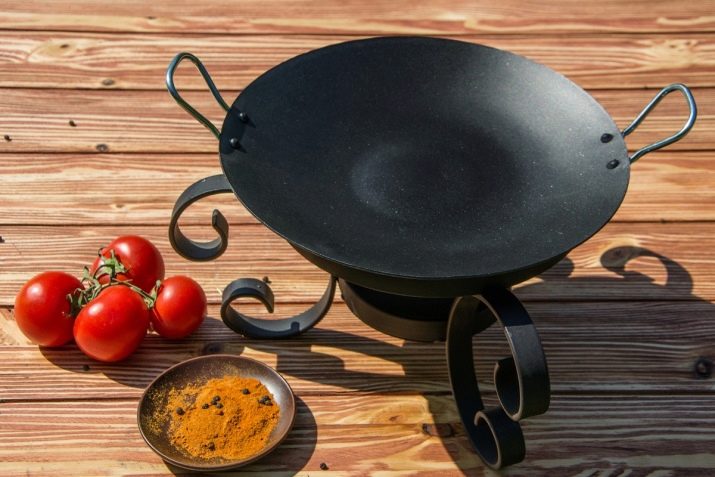
Next, watch a video on how to use the saj frying pan.








